Buyer’s Guide to RIB Selection
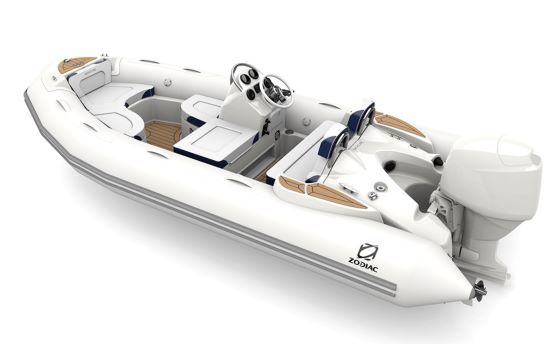
Once upon a time in America, virtually all yachtsmen used rigid fiberglass dinghies as yacht tenders and each year a number of people drowned because they were easy to tip over. Inflatables were first introduced to Americans in the 1970’s but they still used the tippy dinghies. After about 30 years, RIBs began to be accepted in America. Rigid dinghies are thankfully gone now and RIBs are everywhere. There are dozens of manufacturers and brand names but they certainly aren’t all the same. Caveat Emptor. The following is our guide to finding the right size and type of RIB.
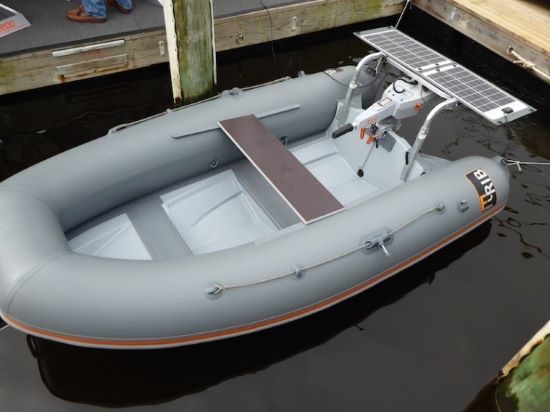
1. Size, Materials & Power
Size. Match the size of the inflatable to the job at hand and room available to carry it. For small boats, a roll up inflatable might be the best selection, but they are small and not as stable as RIBs. Boats with tender garages can usually only take up to 9’ (2.74 m) RIBs. Our experience is that a 12’to 14’ (3.66 m to 4.26) RIB can carry a lot of provisions and four to six people in comfort, and is suitable for a wide range of boat sizes.
Weight. But pulling one up on the beach will be tough. Size and weight are a tradeoff. Single skin bottom RIBs are lighter (10-20% lighter) but they don’t have a storage locker in the bow. Be sure to pick a design with lots of handholds so you can push, pull and handle the dinghy from all sides.
Material. RIB bottoms can be aluminum or fiberglass. Aluminum is light and rugged but can be noisy and may be too light for rough water conditions. Fiberglass bottoms are heavier, quieter and steadier but can be scratched or holed if grounded and they are typically more expensive.
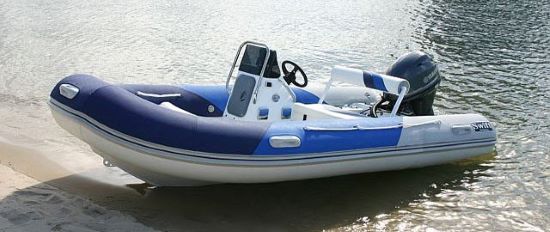
The Tubes. Most cruisers prefer RIB tubes with a large diameter for lots of buoyancy and better protection from waves and spray. They also cause less damage than hoisting them aboard from a crane or davit. Most are made of PVC or Hypalon and both materials come in grades from low to high. Hypalon has better UV degradation resistance, so it may serve cruisers longer but it’s also more expensive. PVC tubes have welded seams, so they don’t leak air and are generally more affordable.
Outboard Engine. Finally, consider the size and horsepower your dinghy can carry. For most cruisers, the bigger the better so the dink will plane. The horsepower will depend on the size of the RIB or inflatable and the expected load and desired speed. For a 12’ RIB, 25-hp should be enough. A slightly bigger RIB might want a 50-hp engine. In all cases, only get a 2-stroke outboard. With them, every stroke is a power stroke. They have high torque and get on plane fast—something you want, particularly if you are alone.
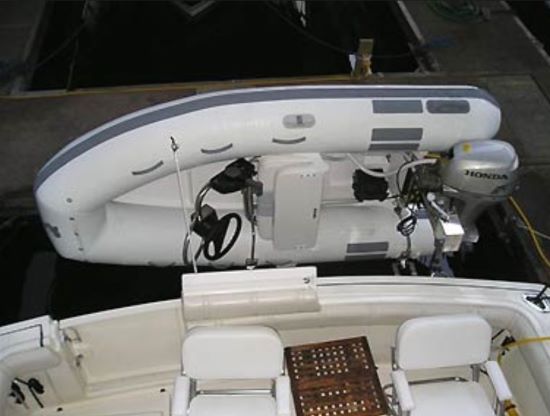
2. Stowing & Towing
Some small cruisers have brackets on the stern that are easy to use and the least expensive way to go, but with the RIBS hoisted up on the stern, it is ugly. Some powerboats have cradles on the swim platform which can be problematic unless the tender is light. Or, there is a submersible platform, something that usually costs around $30,000.
Motoryachts usually have a boat deck and a davit, and this is the best solution of all. Hydraulic davits are expensive, but cranes can also be used and they are much cheaper. Convertibles or flybridge boats can carry a tender on the bow in a cradle and use a hydraulic davit or crane for launching.
Sailboats and catamarans often have davits that make quick work of lifting the small boat out of the water.
Towing a dinghy is not ideal but it is practical for small and mid-range sailboats. Lines can foul, hardware breaks and the weather may not cooperate for a safe tow. For short hops, you may need to tow the tender. First, make sure the tender is empty – remove paddles, PFDs and any other equipment. Shut off and remove an external fuel tank. Check to make sure the plug is installed securely. Remove the outboard that can create drag for the large boat to manage, and that will slow your progress significantly. If you can’t remove the engine, tilt it up so that the lower unit is out of the water and tie the head with lines going to padeyes or handles on either side so the motor stays up
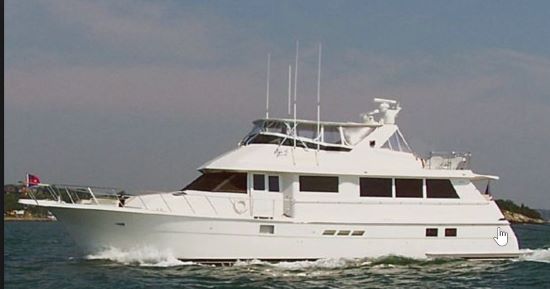
For very short distances a RIB with slightly V’d bottom tracks well, so you may be able to get away with attaching a single line directly between the tow and the big boat. For all other tows, especially with an inflatable, it’s best to rig a bridle.
Towing tips. Try to tow with the dinghy at the center of the mothership wake. The big and little boats should be in sync, riding the crests and troughs of waves at the same time, just one cycle apart. In open water use lengthier tows. Longer lines will create a catenary to lessen shocks as the two boats may come out of sync. To help the dinghy track better, attach the bridle as far down on the bow as possible although this may be dictated by the position of the D-rings.
3. Layout & Comfort
Dinghy layout seems to divide along power and sailboat lines. Cruising sailors like open dinks into which they can stash a lot of stuff as well as bodies. Passengers sit on the tubes, and the outboards are usually tiller-driven and fueled by an external tank tucked up against the transom.
Power boaters, on the other hand, like center console arrangements with a steering wheel and actual seats that may hide the fuel tank and storage. There are also bike-style RIBs where the driver rides a center console that’s more like a personal watercraft seat.
RIB tenders have become as luxurious as anything else on the water, so if money is not an object, why not get the best? For those that have to watch their spending, be careful about going cheap because you think it’s a good deal – you may get a good deal less.
